Weigh to go
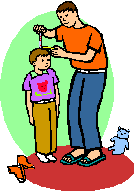
Some of the earliest tools invented by man were designed to measure mass. The history of weighing does not begin in mathematics or in science but in trade and construction. Primitive societies needed and created rudimentary measures for many tasks: building shelters from materials of appropriate size and weight, making clothing fabrics, planting and bartering for food and raw materials. Long before science emerged as a field of study, there were commercial, political and even moral imperatives for unchanging, standard units. Over a thousand years B.C., traders from India and the Mediterranean realised the need to have standard weights. Early Babylonian and Egyptian records and the Bible indicate that the means for weighing standards were seeds and stones. They turned to their environment and used the hard seeds from carob and other plants. The measure for gold and precious gems that we still use, carat, came from the word carob. The mass of the seeds was balanced by a flat stone which the traders carried with them. Babylonians made important improvements upon the invention of the balance. Instead of just comparing the masses of two objects, they compared the mass of each object with a set of polished stones kept just for that purpose. In more modern English measures, the same basis of stones was used for weight. For the horseman, the 'stone' weighed 14 pounds. For wool the 'stone' was 16 pounds, while the butcher and fishmonger used a 'stone' of only 8 pounds.
In Greece the weights were made of lead. Eventually, the Romans took their system of measures with them as they occupied Northern Europe. Pounds and ounces were based on wheat grains that, unlike carob, grew in colder climates.
As societies evolved, measurement units became more complex. More sophisticated numbering systems and the developing science of mathematics made it possible to create measurement systems suited to a variety of trades. It became necessary to find the mass of smaller things and to make more accurate measurements, and the measures had to hold good in different places. However, with the limitations of travel and communications, different systems developed and became established in different parts of the world for the same purposes.
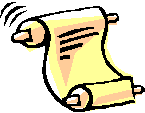
In England, the Magna Carta tried to reduce this confusion to a single standard pound. "There shall be one measure of wine throughout Our kingdom, and one of ale, and one measure of corn, to wit, the London quarter, and one breadth of cloth,..., to wit, two ells within the selvages. As with measures so shall it be with weights." (Runnymede, 1215)
But different pounds continued to be used for different goods; one for wool, another for grain, one for precious metals, and still three others for various goods. It went on like this until Queen Elizabeth I decreed, "7,000 grains to a pound for everything except precious metals which would be weighed in Troy pounds of 5,760 wheat grains". (The Troy pound is believed to have originated in Troyes, France.) The larger pound was known as the avoirdupois, or 'averdepois', pound. It was divided into 16 ounces and each ounce into 16 drams so that the needs of a wide range of traders could be met. But despite best efforts, the two pound measures ran side by side.
Fast forward to 1758 when Parliament in London legalised one measure only, the Troy pound. Did the story end there? No, too simple. As the standardised pound was being made (quite literally) by scientists, the King died and all plans were halted for another 66 years. During that time merchants and traders continued using their favourite measure, the 'averdepois'. The scientists had been making three standard weights which were kept, along with a standard yard measure, in the House of Commons in London. To ensure that people throughout the land used the same standard of mass, each town would have a standard, measured against that in Westminster. Local traders and merchants weights were calibrated against it by the Weights and Measures official. Complaints against short measure were taken seriously and markets were policed by the officials. There were quite severe punishments for measurement infractions, ranging from time in the stocks to fines, trading restrictions and prohibitions, to imprisonment.
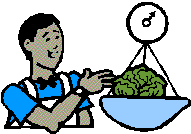
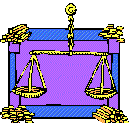
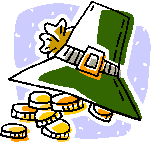
By the 18th century, England achieved a greater degree of standardisation than other continental countries. The English units were suited to trade and commerce because they had been developed and refined to meet such needs. Due to colonisation and dominance of world commerce during the 17th, 18th, and 19th centuries, the English system of measurement units spread to many parts of the world including the American colonies. Although the U.S.A adopted the English system of weights and measures in 1836, there have been several differences between the two countries, why?
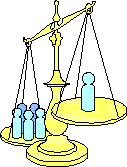
Measuring tools, devices and equipment have their own unique history and are a great stimulus for detective work. There are many old scales, brass weights and working standards which were used by inspectors to be found in antique and even junk shops. Making and testing hypotheses about their uses, investigating the materials they are made from and the markings on the instruments leads to fascinating historical and geographical insights. Most weights are parts of sets, the spacing out of the denominations of the weights can be investigated as can be their shape. Did you know that stacking or nested weights, those flat circular kind often seen on market stalls, never exceed 7 pounds? Or that the manufacturer of bell weights, the decorative, tall brass ones with a ring at the top, can be determined by the design of the base and shoulders?

Introducing measurement through its stories hooks all sorts of learners of all ages, whether the stories are historical or fictional. Many children's books connect to measurement. Graphing how many barley corns fit along the children's finger joints and what is the average; having each child discover if he or she has a part of a finger that measures an inch - finding their own portable tape measures. All are ways to involve youngsters in what others have been doing for thousands of years. The activities also cross over many curriculum divisions.
